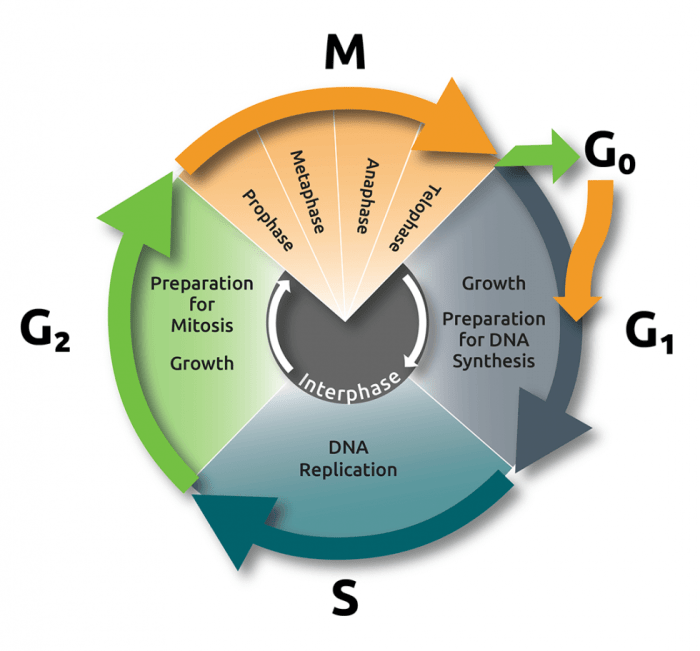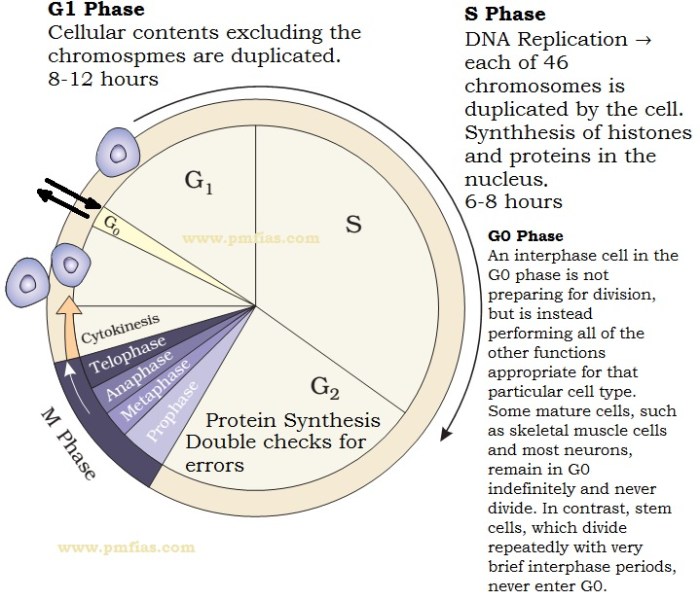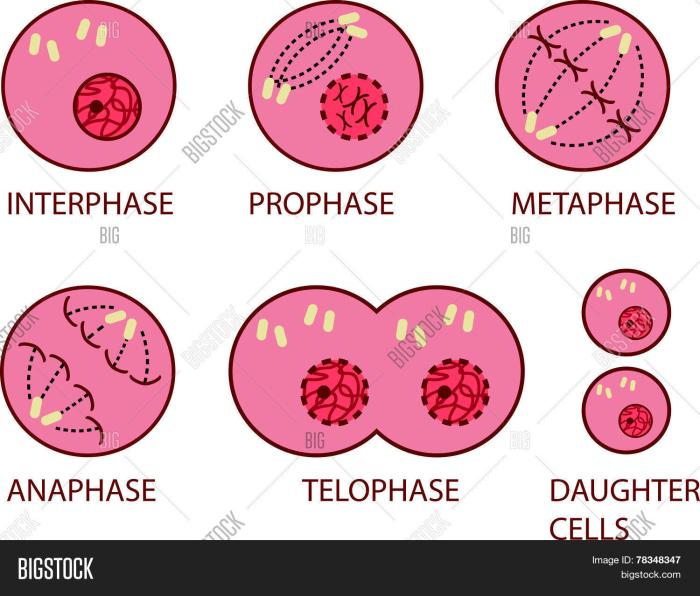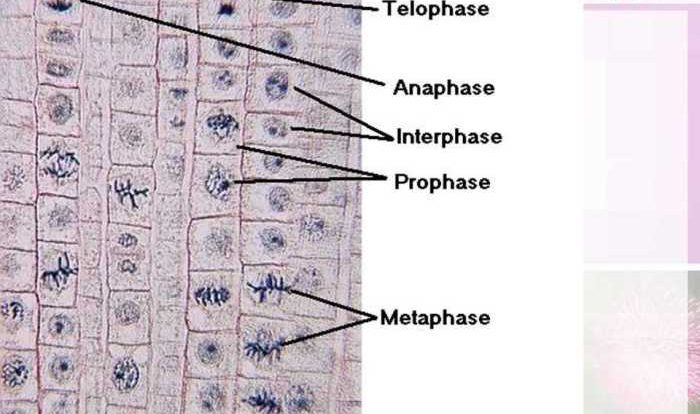Mitosis and cell cycle word scramble sets the stage for this enthralling narrative, offering readers a glimpse into a story that is rich in detail and brimming with originality from the outset. This engaging exploration delves into the intricate world of cell division, unraveling the mysteries of mitosis and the cell cycle with clarity and precision.
Unveiling the stages of mitosis, we embark on a journey through prophase, metaphase, anaphase, and telophase. A comparative table illuminates the key distinctions between these phases, highlighting their unique characteristics and significance in the cell division process. Furthermore, the pivotal role of chromosomes in mitosis takes center stage, unraveling their dynamic behavior and the meticulous mechanisms that ensure accurate chromosome segregation.
Mitosis
Mitosis is a type of cell division that results in two genetically identical daughter cells. It is a continuous process, but for the sake of understanding, it can be divided into four distinct stages: prophase, metaphase, anaphase, and telophase.
Stages of Mitosis
The stages of mitosis are as follows:
- Prophase:Chromosomes become visible, the nuclear envelope breaks down, and the spindle fibers form.
- Metaphase:Chromosomes line up at the equator of the cell.
- Anaphase:Sister chromatids separate and move to opposite poles of the cell.
- Telophase:Two new nuclear envelopes form around the chromosomes, the spindle fibers disappear, and the cell membrane pinches in the middle, dividing the cell into two daughter cells.
| Stage | Description |
|---|---|
| Prophase | Chromosomes become visible, nuclear envelope breaks down, spindle fibers form |
| Metaphase | Chromosomes line up at the equator of the cell |
| Anaphase | Sister chromatids separate and move to opposite poles of the cell |
| Telophase | Two new nuclear envelopes form around the chromosomes, spindle fibers disappear, cell membrane pinches in the middle, dividing the cell into two daughter cells |
Role of Chromosomes in Mitosis
Chromosomes are the structures that carry genetic information. During mitosis, chromosomes are replicated and then separated into two identical sets, one for each daughter cell. This ensures that each daughter cell receives the same genetic information as the parent cell.
Cell Cycle

The cell cycle is the process by which a cell grows and divides. It is divided into four phases: G1, S, G2, and M.
G1 Phase
The G1 phase is the first phase of the cell cycle. During this phase, the cell grows and prepares for DNA replication.
S Phase
The S phase is the second phase of the cell cycle. During this phase, the cell’s DNA is replicated.
G2 Phase
The G2 phase is the third phase of the cell cycle. During this phase, the cell checks for errors in DNA replication and prepares for mitosis.
M Phase
The M phase is the fourth and final phase of the cell cycle. During this phase, the cell divides into two daughter cells.
Regulation of the Cell Cycle
The cell cycle is regulated by a variety of checkpoints. These checkpoints ensure that the cell cycle proceeds in an orderly manner and that errors are corrected before they can cause problems.
- The G1 checkpoint ensures that the cell is large enough to divide and that its DNA is not damaged.
- The S checkpoint ensures that DNA replication is complete and accurate.
- The G2 checkpoint ensures that the cell is ready to divide and that its DNA is not damaged.
- The M checkpoint ensures that the cell divides properly and that the daughter cells are viable.
Relationship between Mitosis and the Cell Cycle

Mitosis is an integral part of the cell cycle, the process by which a cell grows and divides. It is the stage in which the cell’s chromosomes are duplicated and separated into two identical sets, one for each of the two daughter cells that will be formed.
Mitosis is essential for cell growth and development. It allows a single-celled zygote to develop into a multicellular organism and for tissues and organs to grow and repair themselves. Mitosis also plays a role in asexual reproduction, allowing some organisms to create genetically identical offspring.
Disruptions in Mitosis, Mitosis and cell cycle word scramble
Disruptions in mitosis can lead to a variety of diseases, including cancer. Cancer cells often have abnormal chromosomes, which can lead to uncontrolled cell growth and division. Other diseases that can be caused by disruptions in mitosis include Down syndrome, which is caused by an extra copy of chromosome 21, and Turner syndrome, which is caused by the absence of one X chromosome.
Word Scramble

To reinforce the understanding of terms related to mitosis and the cell cycle, a word scramble puzzle is presented. This activity challenges individuals to unscramble the given letters to form the correct terms.
Puzzle
Unscramble the following letters to form terms related to mitosis and the cell cycle:
- SOIMST
- ERENCNTU
- PHSA
- YKCENIOCT
- RMEIOTS
- PHAMRO
- CLLE CYE
- TNEINECR
- ERHTOMAOC
- NREPTEINERS
Clues
Clues for the word scramble puzzle:
- The process of cell division that produces two identical daughter cells
- The stage of mitosis where chromosomes are lined up at the center of the cell
- The structure that divides the cytoplasm during cytokinesis
- The stage of the cell cycle where DNA is replicated
- The division of the cytoplasm
- The stage of mitosis where the chromosomes are separated
- The sequence of events that a cell goes through before dividing
- The stage of the cell cycle where the cell grows and prepares for division
- The stage of mitosis where the nuclear envelope reforms
- The stage of the cell cycle where proteins are synthesized
Solutions
| Scrambled | Unscrambled |
|---|---|
| SOIMST | MITOSIS |
| ERENCNTU | NUCLEUS |
| PHSA | PHASE |
| YKCENIOCT | CYTOKINESIS |
| RMEIOTS | MEIOSIS |
| PHAMRO | PROPHASE |
| CLLE CYE | CELL CYCLE |
| TNEINECR | INTERPHASE |
| ERHTOMAOC | CHROMATID |
| NREPTEINERS | INTERPHASE |
Question Bank: Mitosis And Cell Cycle Word Scramble
What is the significance of mitosis?
Mitosis is essential for cell growth, development, and tissue repair. It ensures the accurate distribution of genetic material to daughter cells, maintaining genetic stability and cellular integrity.
How is the cell cycle regulated?
The cell cycle is tightly regulated by a complex network of checkpoints and regulatory proteins. These mechanisms ensure that the cell progresses through each phase in an orderly manner and that DNA replication and chromosome segregation occur with high fidelity.
